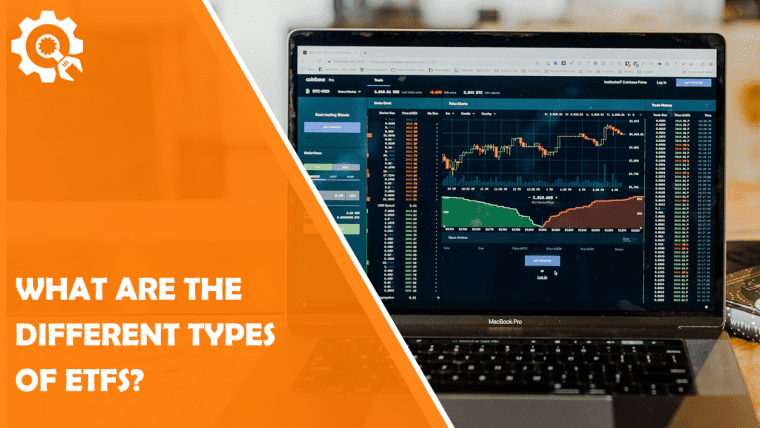There are four main types of ETFs: equity, fixed income, commodity, and currency. Equity ETFs track stocks or stock indexes and are the most popular type of ETF. Fixed income ETFs track bonds or bond indexes. Commodity ETFs track commodities such as gold or oil. Currency ETFs track foreign currencies. If you’re looking to invest in precious metals, you might consider options that allow you to Buy Gold directly through an ETF.
What are the benefits of ETFs?
ETFs offer many benefits, including lower costs than traditional mutual funds, greater flexibility, and easier access to a wide range of asset classes. ETFs also tend to be more tax-efficient than mutual funds.
What are the risks of investing in ETFs?
Like all investments, there are risks associated with investing in ETFs. Some risks include market risk, liquidity risk, and tracking error risk. Therefore, it’s important to understand these risks before investing in ETFs.
What are the different types of ETFs?
There are four main types of ETFs: equity, fixed income, commodity, and currency. Each type of ETF tracks a different asset class and has risks and rewards.
Equity ETFs: Equity ETFs track stocks or stock indexes and are the most popular type of ETF. They offer exposure to a wide range of companies and can be a good way to diversify your portfolio. However, equity ETFs are subject to market risk, meaning their value can go up or down depending on the overall stock market.
Fixed income ETFs: Fixed income ETFs track bonds or bond indexes. They offer exposure to a wide range of debt instruments and can provide a steadier return than equity ETFs. However, fixed-income ETFs are subject to interest rate risk, meaning their value can go up or down depending on changes in interest rates.
Commodity ETFs: Commodity ETFs track commodities such as gold or oil. They can offer exposure to commodities without the need for futures contracts or other complex investments. However, commodity ETFs are subject to commodity price risk, meaning their value can go up or down depending on changes in the prices of the underlying commodities.
Currency ETFs: Currency ETFs track foreign currencies. They can offer exposure to a wide range of currencies without the need to trade in the foreign exchange market. However, currency ETFs are subject to currency risk, meaning their value can go up or down depending on changes in the exchange rates of the underlying currencies.
Passive and Active ETFs
There are two main types of ETFs: passive and active. As their names suggest, the investment strategies for each type differ.
Passive ETFs track an index, such as the S&P 500. This is done by investing in all (or a representative sample) of the securities that make up the index. Because passive ETFs aim to track an index, they generally have lower management fees than active ETFs.
On the other hand, active ETFs are managed by portfolio managers who decide which securities to buy and sell to achieve the fund’s investment objectives. Active ETFs often target a specific sector or market, such as small-cap stocks or emerging markets. Due to the active management, these ETFs typically have higher management fees than passive ETFs.
Index Funds vs. ETFs
While ETFs and index funds aim to track an index, there are some key differences between the two.
ETFs trade on an exchange like a stock, while index funds are not. This means you can buy and sell ETFs throughout the day, while you can only buy and sell index funds at the end of the day. Also, index fund prices are based on the closing prices of securities in the underlying index.
Another difference is that ETFs often have lower expense ratios than index funds. This is because ETFs are not subject to the same regulations as index funds, which allows them to have lower overhead costs.
Lastly, ETFs can be more tax-efficient than index funds. This is because ETFs generally have lower turnover, meaning they buy and sell fewer securities yearly. This results in fewer capital gains (taxable) for investors in ETFs than for investors in index funds.
Examples of Popular ETFs
The SPDR S&P 500 ETF (SPY) is one of the most popular ETFs on the market. As the name suggests, it tracks the S&P 500 index, a basket of 500 large-cap US stocks. SPY is one of the oldest and largest ETFs, with over $250 billion in assets under management.
Another popular ETF is the iShares Core S&P 500 ETF (IVV). Like SPY, IVV tracks the S&P 500 index. However, IVV has a lower expense ratio of 0.07%, compared to SPY’s 0.09%.
The Vanguard Total Stock Market ETF (VTI) is another popular investor choice. As the name suggests, it tracks the entire US stock market, exposing you to small-, mid-, and large-cap stocks. In addition, VTI is one of the largest ETFs, with over $600 billion in assets under management.
The iShares MSCI EAFE ETF (EFA) is a popular choice for international equity exposure. EFA tracks the MSCI EAFE index, consisting of large- and mid-cap stocks from developed markets outside the US and Canada.
Finally, the SPDR Gold Shares ETF (GLD) is a popular choice for gold exposure. As the name suggests, GLD tracks the price of gold. Gold is often considered a haven asset, and GLD gives you a way to invest in gold without having to own it physically.
The Bottom Line
ETFs are a versatile way to invest. There are ETFs for almost every asset class, so you can easily build a diversified portfolio. Because ETFs trade on exchanges, they are easy to buy and sell.
